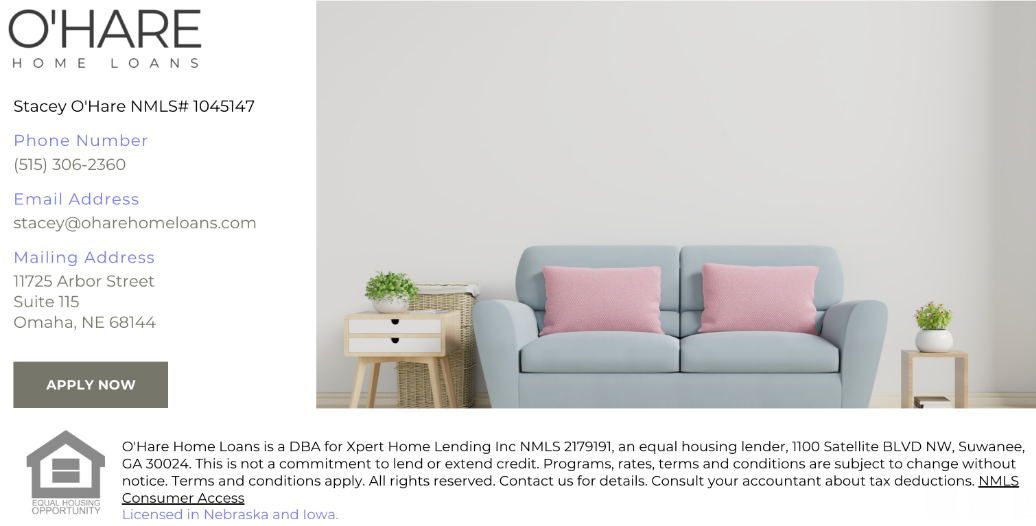Why Invest Omaha Nebraska?

Why do I believe the Silicon Prairie Will Outshine the Sun Belt in 2025? Well, friends, it’s because the secret's finally out! Our beloved Omaha has just been ranked among the top 10 real estate markets to watch in 2025 and let me tell you, it's been a long time coming. While everyone's been focused on those crowded Sun Belt cities, we've been quietly building something special in the heartland.
Let's talk about the numbers that are turning heads. Did you know that national analysts are excited about Omaha and her potential? While Sun Belt markets are seeing price plateaus and rental slowdowns, Omaha shows remarkable stability and growth. Our median home prices have increased by a steady 7.2% year-over-year without the dramatic spikes that have caused affordability issues in places like Phoenix and Austin.
What's interesting is that our average time on the market is just 14 days, compared to 45+ days in many Sun Belt cities. And with an average price per square foot of $165, we offer incredible value compared to markets like Nashville ($275) or Austin ($295).
So, what's driving our growth? Remember when they started calling us the Silicon Prairie? Well, that nickname's proving prophetic. Our tech sector is booming, with companies like Toast, LinkedIn, and Facebook expanding their presence here. But it's not just tech—Mutual of Omaha's new downtown headquarters and the continued growth of our medical corridor are creating high-paying jobs and attracting young professionals in droves.
Speaking of young professionals, here's a statistic raising eyebrows: our 25-34-year-old population has grown by 12% in the last year alone. That's more than twice the growth rate of popular cities like Tampa and Charlotte.
While investors have been fighting over properties in Phoenix and Miami, our market has quietly become the Investment Opportunity Everyone Missed, offering remarkable stability with growth potential. Our rental market is showing a healthy 5.8% annual return, but here's the kicker – our vacancy rates are sitting at just 3.2%, well below the national average of 5.9%.
Want to know what sets us apart? Property taxes in Douglas County are about 30% lower on average than comparable markets in Texas and Florida. When you factor in our lower insurance rates (we don't have hurricanes, folks!), the total cost of ownership makes Omaha look mighty attractive.
Meanwhile, keep an eye on the following neighborhoods. Blackstone District's continued renaissance perfectly exemplifies what makes Omaha unique. Although property values here have increased 15% in the last year, we still see opportunities for renovation and value-added investments. The same goes for Benson, where new restaurants and entertainment venues drive demand for residential and commercial property.
Downtown and the Capitol District are writing their own success story. With the streetcar project breaking ground and new development announcements seemingly every week, we see property appreciation rates of 9-11% annually in these areas.
National analysts are finally figuring out That Omaha is not just another boom town.
We're built differently. While Sun Belt cities are dealing with infrastructure strain and water concerns, we've got capacity for growth. Our cost of living remains 12% below the national average, even as we add amenities and attractions.
The numbers tell the story: our unemployment rate is 2.8%, we're seeing steady job growth at 3.2% annually, and our local GDP growth outpaced the national average by 1.5% last year. These aren't boom-and-bust statistics—they're indicators of sustainable development.
If you're already a homeowner in Omaha, congratulations! Your home's equity has likely grown by 18-22% in the last two years. But here's the best part: analysts are projecting a 6-8% annual appreciation over the next three years. That's not the double-digit growth some markets saw during the pandemic, but it's sustainable and real.
For investors, our market offers something increasingly rare: properties that still follow the 1% rule (monthly rent equals 1% of purchase price) in solid neighborhoods. Try finding that in Austin or Tampa these days!
So, watching the horizon, what's next for Omaha? The next few years look bright for our city. The new airport terminal, expanding streetcar system, and continued riverfront development add value to our real estate market. Major employers are expanding, and our universities are reporting record enrollment numbers.
We're seeing increased interest from out-of-state investors, but here's the good news: there's still plenty of opportunity. Unlike some markets where institutional investors have snapped up much of the available property, Omaha still has room for individual investors and first-time homebuyers.
Finally, we might not have palm trees or ocean views, but we've got something better—a real estate market that makes sense. Currently, Sun Belt States face affordability issues, strained infrastructure, and climate concerns. Omaha, NE, offers something completely different: Sustainable growth, strong fundamentals, and genuine community value make our market extremely attractive.
If you've been waiting on the sidelines, now might be the time to move. Unlike the Sun Belt States, Omaha's market strength isn't based on speculation or temporary trends—it's built on the solid Midwestern foundation of strong fundamentals and innovative growth strategies. And that's something worth investing in.
Want to learn more about specific investment opportunities in Omaha? Contact The Heim-Berg Team: 📱 402-677-9024 🌐 www.OmahaAreaLiving.com Your Omaha neighborhood experts will help you discover the perfect property in this historic community or provide detailed market analysis and investment strategies tailored to your goals.









